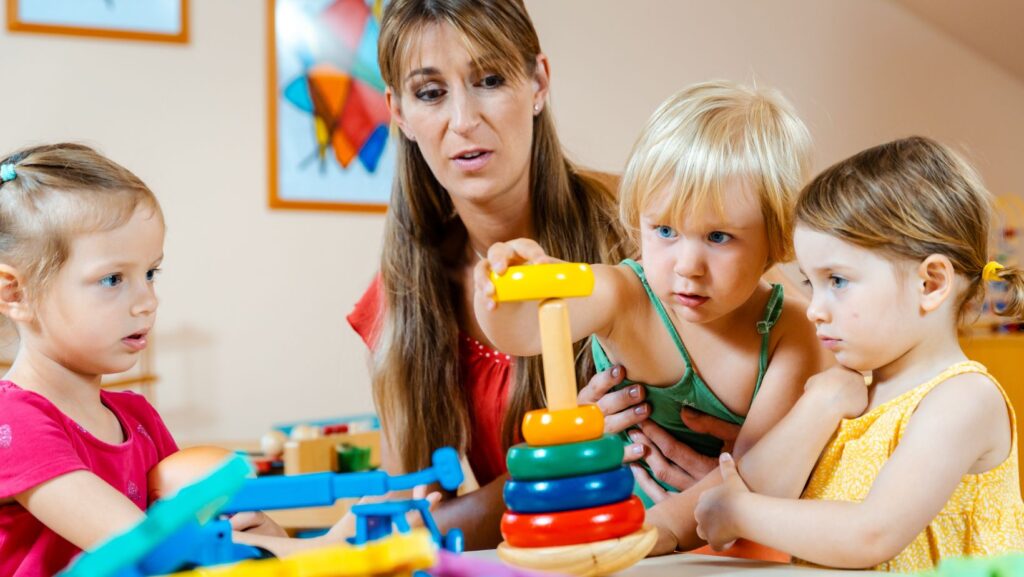Understanding the different domains of child development can unlock a world of insight into a child’s growth and learning. It’s not just about reaching physical milestones, but also about cognitive, social, and emotional development.
In this article, we’ll delve into these domains, shedding light on how they each play a crucial role in shaping a child’s future. We’ll also explore how parents and caregivers can support and nurture these areas of development, paving the way for a well-rounded, confident individual.
So, whether you’re a parent, educator, or just curious about child development, this article promises to be a valuable guide. Stay tuned as we navigate the complex, yet fascinating, journey of child development.
Domains of Child Development
A child’s journey through developmental stages is a multifaceted one, encompassing several core domains. Nurturing these aspects allows for wholesome growth, thereby equipping the child with the necessary skills and competencies for a bright future.
Cognitive Development
 Cognitive development refers to gains in problem-solving, reasoning, and thinking abilities. Notably, developmental psychologist Jean Piaget’s theory segmented this development into four stages: sensorimotor, pre-operational, concrete operational, and formal operational. Allowing children to engage in age-appropriate activities helps bolster cognitive development, such as puzzles for enhancing problem-solving abilities or storytelling sessions for boosting imaginative power.
Cognitive development refers to gains in problem-solving, reasoning, and thinking abilities. Notably, developmental psychologist Jean Piaget’s theory segmented this development into four stages: sensorimotor, pre-operational, concrete operational, and formal operational. Allowing children to engage in age-appropriate activities helps bolster cognitive development, such as puzzles for enhancing problem-solving abilities or storytelling sessions for boosting imaginative power.
Social and Emotional Development
This domain corresponds to the child’s ability to interact with others, perceive and understand emotions, and build relationships. Erik Erikson’s stages of psychosocial development offer useful insights into this process, such as establishing trust versus mistrust during infancy or grappling with identity versus role confusion during adolescence. Ensuring a safe, supportive environment for the child helps encourage healthy interpersonal interactions and emotional expression.
Physical Development
Physical development emphasizes the growth of a child’s body and the acquisition of gross and fine motor skills. This process has two significant aspects – growth (increasing in physical size) and maturation (advancing in developmental stage). Activities like playing catch or dancing can foster gross motor skills, while threading beads or coloring within lines can enhance fine motor skills.
Language Development
 Language development refers to the child’s capacity to communicate with others using sounds, words and sentences. Linguist Noam Chomsky’s language acquisition theory underscores children’s inherent ability to learn languages. It’s critical to expose children to rich language experiences and encourage them to express themselves, from baby babble during infancy to complex sentences in preschool years.
Language development refers to the child’s capacity to communicate with others using sounds, words and sentences. Linguist Noam Chomsky’s language acquisition theory underscores children’s inherent ability to learn languages. It’s critical to expose children to rich language experiences and encourage them to express themselves, from baby babble during infancy to complex sentences in preschool years.
Importance of Early Child Development
Delving deeper into early child development, one identifies its impact on broader aspects of a child’s life. From learning to social integration, it plays a profound role.
Impact on Learning
Proper child development, especially in early stages, lays a strong foundation for learning. During this period, a child’s brain demonstrates remarkable adaptability, often referred to as ‘neuroplasticity.’ This trait, in the brain’s first few years, enables solidity in learning structures. Children gain the ability to acquire multifaceted skills such as coordination, logic, problem-solving, and memory. For instance, playing with blocks promotes spatial reasoning, while number games enhance quantitative understanding.
Influence on Social Integration
 Beyond learning, early child development intimately influences a child’s social integration. Primary experiences shape the child’s social interactions and determine the nature of his or her relationships in the future. For example, when a child engages in play groups or shared activities, he or she learns important social skills like communication, cooperation, and negotiation. These experiences shape their understanding of social norms, roles, and expectations, aiding their seamless integration into society.
Beyond learning, early child development intimately influences a child’s social integration. Primary experiences shape the child’s social interactions and determine the nature of his or her relationships in the future. For example, when a child engages in play groups or shared activities, he or she learns important social skills like communication, cooperation, and negotiation. These experiences shape their understanding of social norms, roles, and expectations, aiding their seamless integration into society.
Key Theories and Models
Understanding the domains of child development isn’t just academic—it’s a tool for parents and caregivers to nurture a child’s growth. It’s clear that early development plays a crucial role in shaping a child’s future, from learning abilities to social integration. By leveraging neuroplasticity, children can acquire skills such as coordination and problem-solving. Moreover, early experiences shape social interactions and relationships, fostering skills like communication and cooperation. This paves the way for seamless societal integration. So, it’s essential to focus on each domain—physical, cognitive, social, emotional, and language—to ensure a holistic development. This understanding can help ensure that every child gets the best start in life, setting the stage for successful and fulfilling futures.



